- Home
- Terry C. Johnston
Red Cloud's Revenge
Red Cloud's Revenge Read online
The author and publisher have provided this e-book to you for your personal use only. You may not make this e-book publicly available in any way. Copyright infringement is against the law. If you believe the copy of this e-book you are reading infringes on the author’s copyright, please notify the publisher at: us.macmillanusa.com/piracy.
Contents
Title Page
Copyright Notice
Dedication
Author’s Foreword
Maps
Prologue
Chapter 1
Chapter 2
Chapter 3
Chapter 4
Chapter 5
Chapter 6
Chapter 7
Chapter 8
Chapter 9
Chapter 10
Chapter 11
Chapter 12
Chapter 13
Chapter 14
Chapter 15
Chapter 16
Chapter 17
Chapter 18
Chapter 19
Chapter 20
Chapter 21
Chapter 22
Chapter 23
Chapter 24
Chapter 25
Chapter 26
Chapter 27
Chapter 28
Chapter 29
Chapter 30
Chapter 31
Chapter 32
Chapter 33
Chapter 34
Chapter 35
Chapter 36
Chapter 37
Chapter 38
Chapter 39
Chapter 40
Chapter 41
Epilogue
Teaser
The Plainsmen Series by Terry C. Johnston
Praise for previous books by Terry C. Johnston
About the Author
Copyright
lovingly dedicated to my mother
*******
the woman who passed on to me her compassion for others and her love for the land, besides giving me what might matter most: a sense of roots
Author’s Foreword
I believe it important to give a moment to a few thoughts before the reader dives into this novel with both feet. Not so much to explain anything of the story itself, but to give you a sense of what it is you are about to read.
This, above all, is the story of a time and characters largely forgotten, what with the pace of our comfortable, relatively untroubled lives. What strikes me as a shame is that most of those who have a speaking acquaintance with the opening of the West know little or nothing of that summer Red Cloud sought to purge his hunting ground of the white man forever. After the Fetterman Massacre the previous December of 1866, the confederated Sioux, Cheyenne, and Arapaho bands vowed to drive the soldiers and white travelers on the Montana Road from the Big Horn country.
In two long and pitched battles, each fight only ninety miles from the other in distance and but some twenty-four hours apart in time, the Indians failed to wipe out small bands of determined men. It is, therefore, ultimately ironic that while Red Cloud’s bloody plan of exacting his terrible revenge on the white men at forts Phil Kearny and C.F. Smith failed miserably, the Oglalla chieftain did succeed with his summer of warfare in convincing the army to abandon not only its forts along the Bozeman Trail, but the Bozeman Trail itself.
To date, the Wagon-Box Fight at Fort Phil Kearny on the second of August, 1867, has been more thoroughly explored by historians. Never before in novel form.
The Hayfield Fight at Fort C.F. Smith on the day before has never received the historical attention due it. Perhaps because in the army’s shortsighted view of things, it was not a military encounter, but instead one of hostile Indian forces pitted against civilian teamsters performing contract labor. Its story as well has never been told in a novel.
The drama of one battle cannot be torn from the story of the other. Both fights were planned as parts of the whole. They were far from being isolated skirmishes.
In a study of the era of the Indian Wars, again and again one runs across instances of small groups of determined defenders holding out against overwhelming odds of screeching, equally determined horsemen. And time and again I run across references in each and every one of those battles which clearly and unequivocally state that the white men thus surrounded and fighting for their very lives were nonetheless most ready to commit suicide at a moment’s notice should the fight be lost and the red onslaught breech the walls.
Even more than merely being ready to commit suicide, I have read repeatedly of these frontiersmen and soldiers alike making concerted and careful preparations to take their own lives should the fight be lost.
Time and again in the writing of the Old West, one runs across the well-considered, oft-repeated, and most-popular notion that in the end a white man must take his own life before he is captured alive by a band of hostile warriors. To be taken prisoner simply meant unspeakable agony and torture. A slow death.
No death for a hero.
Instead, it is perhaps a paradox for those of us viewing that era from this distance and with our twentieth-century minds to attempt understanding the superstition, ignorance, and outright fear with which most white men approached a coming battle with what they viewed as naked, savage, pagan, and bloodthirsty minions of the Great Plains. Far too many of us today cannot accept that brave men would take their own lives rather than forfeiting those lives to an agonizing, tortured, and slow death.
But one must stop and consider the nineteenth-century mind of those who ventured beyond the confines of just what scant civilization the West offered at the time. We are asked to consider that it was the last brave act of desperate, overwhelmed, and very courageous men to take their own lives rather than submit to what they knew without a doubt would be unspeakable torture.
So then, I tell these stories of the brave and the cowardly. Tales of those ready to die and those pleading to live, pinned down and without hope. Human conflict, pathos and passion—white men and red alike colliding on that farflung prairie during a summer like no other on the high plains. The time has come for the stories of those two obscure battles to be told. Both were waged beneath the same burning sun that still scorches the prairie in late summer, were fought between a small group of men determined to hold out against overwhelming odds and those mounted bands of thousands—what could possibly be richer backdrop for our cavalryman turned plainsman turned cavalryman once more: Seamus Donegan (pronounced “Shamus”).
The writer of historical fiction assumes a perilous task: while he must remain true to history, there are the demands of fiction pressing the novelist to pace, dramatize, capsulize, omit. So with both battles studied and restudied, the sites visited and walked over, a sense of place and time finally in my grasp—the story of that summer of 1867 all but lay before me. I had only to let the characters of that day tell it.
As a work of history, I relied on many sources, a few of which I’ll make mention. The first four I called upon most heavily—drawing much of the human element of the story, as those were four firsthand, primary accounts given by battle participants. Two from the Hayfield Fight. Two from the Wagon-Box. What remained was for the novelist in me to flesh their story out.
Finn Burnett, Frontiersman: the Life and Adventures of an Indian Fighter, edited by Robert B. David, was perhaps drawn upon more than any other source, as it proved one of the firsthand primary accounts by not only an eyewitness, but written by one who had a commanding presence in the Hayfield Fight, civilian Finn Burnett himself.
Every bit as useful was the second primary source, the story of Pvt. Sam Gibson, as told in E. A. Brininstool’s historic work, Fighting Red Cloud’s Warriors.
Cyrus Townsend Brady’s Indian Fights and Fighters continues t
he tradition by recounting the story of another civilian teamster, R. J. Smyth, in his recollections of the Wagon-Box Fight.
In his book Life and Adventures of a Drummer Boy; or, Seven Years a Soldier, James D. Lockwood gives us a stirring account of his participation in the Hayfield Fight.
Roy E. Appleman’s work on both battles appeared in Great Western Indian Fights. Both readable stories were well-researched, and thoughtful opinions rendered.
As I have stated before, the Wagon-Box Fight has received the greatest print. J. W. Vaughn in his monumental work, Indian Fights: New Facts on Seven Encounters, goes far to balance the scales of history and historical journalism with his enlightening theories on the Hayfield encounter.
One cannot write a historical novel of the Montana Road without mentioning the superb and highly readable account of that era portrayed by Dorothy M. Johnson in The Bloody Bozeman.
With these sources at my fingertips, what remained was for the novelist in me to flesh out the story with muscle and sinew, giving these ghosts from our past voice once more. And voice I gave them, speaking most of the mood and flavor of both that time and that place. To accomplish this, I relied on two more firsthand accounts, both written by women married to officers at Fort Phil Kearny during those dramatic months portrayed in the first novel in this series, Sioux Dawn—the story of the Fetterman Massacre. Frances C. Grummond (later Carrington) wrote her story in My Army Life, and the Fort Phil. Kearny Massacre. In addition, Margaret I. Carrington accompanied her husband to the foot of the Big Horns, where the colonel would build his fort and protect the Montana Road, leaving us her Absaraka: Home of the Crows, published in 1868. Both women left us a rich legacy coupled with a sense of that time on the high plains in the shadow of the Sioux and Cheyenne.
Yet, beyond the mere retelling of history, it is left for the historical novelist himself to add something that history alone can’t convey to most readers—a warm, throbbing pulse that truly allows the reader to relive history.
The era of the Indian Wars of the Far West is really the story of the final conquest of western America. During that quarter century we witness the conclusion to what had begun when the Pilgrims set foot on Plymouth Rock or Sir Walter Raleigh founded his Virginia Colony. By the end of the Civil War, America eagerly lurched westward, ready once more to grow. Until that time, the westward-expanding tide had only stretched its fingers tentatively beyond the Missouri and Mississippi Rivers, not as yet seriously driving before the white migration the mighty bands of Sioux and their allies—both Cheyenne and Arapaho.
But with the declaration of peace following Appomattox, the government of this reunited Union could now marshal its resources and devote vast amounts of money, materiel, and manpower to the pacification of the West.
The story told in Sioux Dawn of a bitterly cold December day in 1866, as Capt. William Judd Fetterman led his men beyond Lodge Trail Ridge above Fort Phil Kearny and into history, would not end until another bloody, cold December day twenty-four years later in 1890, with another massacre along a little-known creek called Wounded Knee.
The fever of that quarter century made the Indian Wars a time unequaled in the annals of time, when a vast frontier was forcibly wrenched from its inhabitants, during a struggle as rich in drama and pathos as any in the history of man.
This is a story of those soldiers come to man the forts that would guard the Montana Road—to protect those civilians in whose breasts burned the dream of untold wealth to be found by scraping a pick along the ground or washing some gravel from the bottom of a stream. The same dream that for years had driven men west to Sutter’s Mill in California, Cripple Creek in Colorado, and now Alder Gulch in Montana—the latest strike to land upon the ears of war-weary soldiers, Union and Confederate alike. But to reach those northern goldfields of Montana Territory, a man had to march north from Fort Laramie, north into the jaws of Red Cloud’s land, using John Bozeman’s road, which pierced the very heart of prime Sioux hunting ground.
Any man who laid eyes on that country had to come away understanding why the Indians guarded their land so jealously. The whole of the Big Horn country was laced with clear, cold streams born of winter snows, feeding the luxuriant valleys teeming with abundant wildlife of all description. At the edge of the eastern plains, in the shadow of the Big Horns, roamed the mighty pte, the Sioux’s buffalo, a nomadic animal, followed season after season by a nomadic people, providing the Indian with everything he required for his survival century after century.
Into the heart of this redman’s paradise, the postwar army dispatched a handful of companies assigned to protect the Road from a series of forts. From the moment of their establishment in the summer of 1866 until the time of their abandonment some two years later, Fort Phil Kearny and Fort C.F. Smith to the north were under a constant state of siege. Both posts so vigilantly watched by hostile war and scouting parties that those virtually trapped in the forts found little safety outside the stockades unless accompanied by a troop of soldiers. Even then, sheer numbers did not always guarantee that the Indians would not swoop down to harass, burn, or drive off stock.
The stories of the Hayfield and Wagon-Box Fights give proof of the fact that sheer numbers of soldiers could not by themselves guarantee immunity to attack.
It is no exaggeration to state that Red Cloud’s hostiles surrounded the forts at all times. Not one log was cut for the stockades, nor was any hay mowed for the stock, nor any mail moved without a heavy guard.
There is no richer story than to peer like voyeurs into the lives of those men and women under this constant stress of life and death. Wondering, as only a reader in the safety and comfort of his easy chair can, if he too would have measured up with the gallant defenders who held off charge after charge of the hundreds.
Important too is that the reader realize he’s reliving the story of real people. From Lt. Col. Henry W. Wessells and his commander at Fort Phil Kearny … to the soldiers like Capt. James W. Powell and Lt. John C. Jenness, those killed and wounded, in addition to the oft-faceless civilians who found themselves trapped in two bloody little fights under a nameless hot sun across two days in August in 1867 … you are reading a story peopled with flesh and blood that walked and fought, cried and cheered on that hallowed ground.
So it is that good historical fiction fuses the fortunes, adventures, and destinies of numerous characters. Gold hunters and con men, sutlers and cowards, enlisted men and those few officers’ wives who followed, trusting to some man’s dream. All were actual, living souls walking across that crude stage erected on the high plains below Big Horns … all, save one.
Into their midst I send my fictional character, Seamus Donegan, late of the Union Army of the Shenandoah, cavalry sergeant turned soldier-of-fortune, having sought a change of scenery in the West, and some relief if not escape for his lonely, aching heart. Over a series of books that will encompass this era of the Indian Wars, you will follow Seamus as he marches through some of history’s bloodiest hours. Not always doing the right thing, but trying nonetheless, for Donegan was no “plaster saint” nor “larger-than-life” dime-novel icon.
History has itself plenty of heros—every one of them dead. Donegan represents the rest of us. Ordinary in every way, except that at some point we are each called upon by circumstances to do something extra-ordinary … what most might call heroic. Forget the pain, the thirst and hunger. Forget the blood. Each man does what he must in the end.
That’s the saga of Seamus Donegan that began with Sioux Dawn. If you will listen, you’ll hear wagonmasters cursing their balky mules struggling with the mowing machines and wood wagons … the screeching war cries of Indians mingled with the screams of frightened women and the prayers of untried soldiers. Sniff the air—you’ll likely smell the stench of gunpowder and your own blood slowly cooking as it drops from your wounded head into the overheated breech of your rifle, while you wait for the next rattle of gunfire or the hair-raising thunder of Indian pony hoofbeats bearing down
on you.
There is, after all, a sense of something inevitable afoot here in this history of the Indian Wars. Something of destiny’s impelling course sweeping man up in its headlong rush into the future.
So remember above all else—what is written here happened. This story needs no false glamor, no shiny veneer of dash and daring. What has always been the story of man at war—of culture against culture, race against race—needs be told without special lighting.
There’s drama enough in that summer of Red Cloud’s revenge for any man.
The stories of the Hayfield and Wagon-Box fights are really very old tales indeed, my friends. Tales whose time have come at last. I’ve done my best telling the whole cloth of that story in these pages. None alive can say if I’ve succeeded or failed … save for those ghosts still haunting the grassy meadows, ghosts both red and white who alone lived and perhaps died during those brutal hours when Red Cloud’s thousands flung themselves against less than a hundred scared yet determined men who held out against all odds.
Terry C. Johnston
Fort C.F. Smith National Historic Site
Montana Territory
August 1, 1989
Map drawn by author, compiled from maps drawn by Captain Edward L. Hartz (August, 1867), and the National Park Service.
Map drawn by author, compiled from maps drawn by Colonel Henry B. Carrington, Palacios, and the Phil Kearny/Bozeman Trail Association, Inc.
Prologue
God, how he hated these primitive savages.
All their hocus-pocus and hoo-doo witchcraft, he brooded to himself.
What he needed most now was a good dose of fumaric in those bloody holes in his belly … and a jolt of whiskey down his gullet.
“Captain” Robert North adjusted himself on the bed of elk robes, easing a wool blanket from his shoulder to study his wound one more time. More to assure himself again that the soldier’s bullet had passed on through his belly, out the small of his back. Sighing, he sank back on the buffalo robes, quietly whispering the words to the old Confederate song.

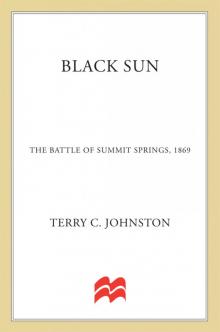 Black Sun, The Battle of Summit Springs, 1869
Black Sun, The Battle of Summit Springs, 1869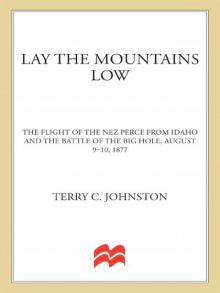 Lay the Mountains Low
Lay the Mountains Low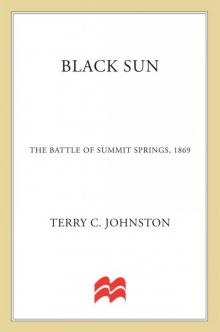 Black Sun: The Battle of Summit Springs, 1869 (The Plainsmen Series)
Black Sun: The Battle of Summit Springs, 1869 (The Plainsmen Series)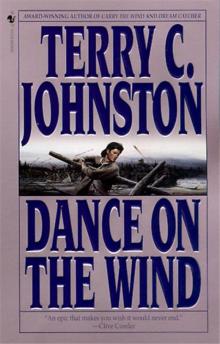 Dance on the Wind tb-1
Dance on the Wind tb-1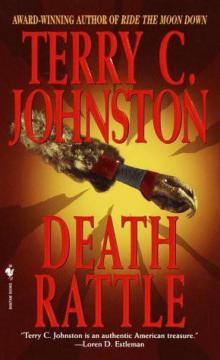 Death Rattle tb-8
Death Rattle tb-8 The Stalkers
The Stalkers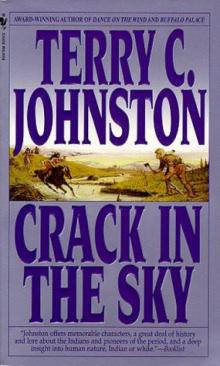 Crack in the Sky tb-3
Crack in the Sky tb-3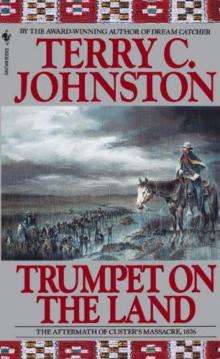 Trumpet on the Land: The Aftermath of Custer's Massacre, 1876 tp-10
Trumpet on the Land: The Aftermath of Custer's Massacre, 1876 tp-10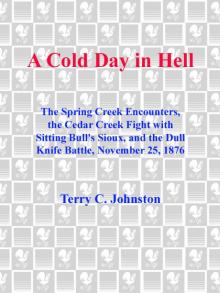 A Cold Day in Hell
A Cold Day in Hell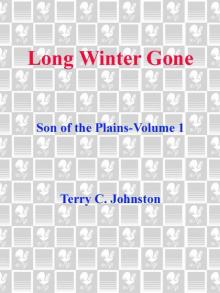 Long Winter Gone: Son of the Plains - Volume 1
Long Winter Gone: Son of the Plains - Volume 1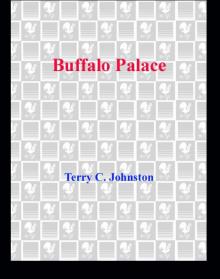 Buffalo Palace
Buffalo Palace Cries from the Earth
Cries from the Earth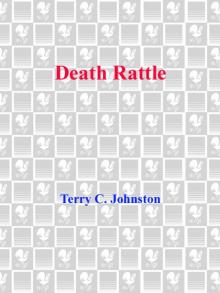 Death Rattle
Death Rattle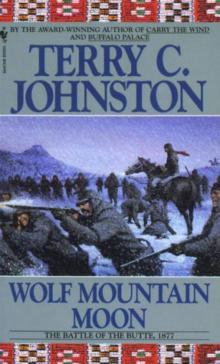 Wolf Mountain Moon: The Battle of the Butte, 1877 tp-12
Wolf Mountain Moon: The Battle of the Butte, 1877 tp-12 Crack in the Sky
Crack in the Sky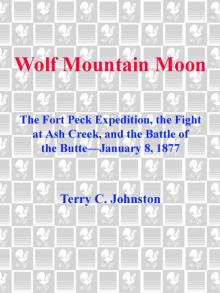 Wolf Mountain Moon
Wolf Mountain Moon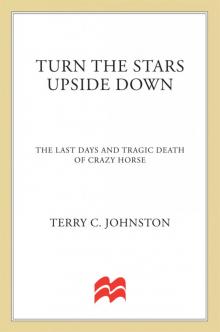 Turn the Stars Upside Down: The Last Days and Tragic Death of Crazy Horse
Turn the Stars Upside Down: The Last Days and Tragic Death of Crazy Horse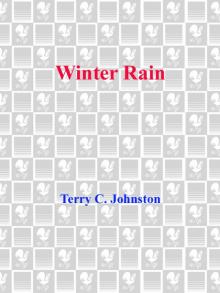 Winter Rain
Winter Rain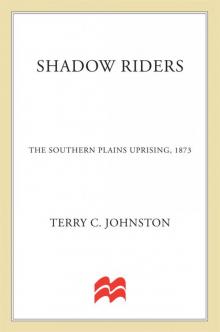 Shadow Riders: The Southern Plains Uprising, 1873 (The Plainsmen Series)
Shadow Riders: The Southern Plains Uprising, 1873 (The Plainsmen Series)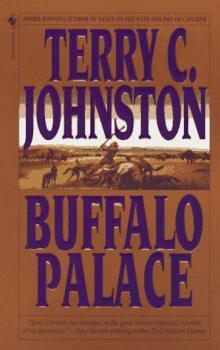 Buffalo Palace tb-2
Buffalo Palace tb-2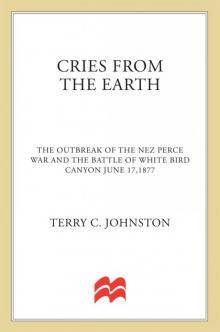 Cries from the Earth: The Outbreak Of the Nez Perce War and the Battle of White Bird Canyon June 17, 1877 (The Plainsmen Series)
Cries from the Earth: The Outbreak Of the Nez Perce War and the Battle of White Bird Canyon June 17, 1877 (The Plainsmen Series)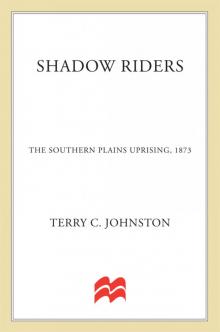 Shadow Riders, The Southern Plains Uprising, 1873
Shadow Riders, The Southern Plains Uprising, 1873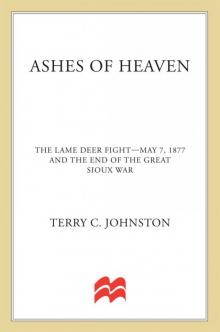 Ashes of Heaven (The Plainsmen Series)
Ashes of Heaven (The Plainsmen Series)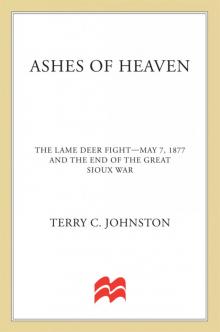 Ashes of Heaven
Ashes of Heaven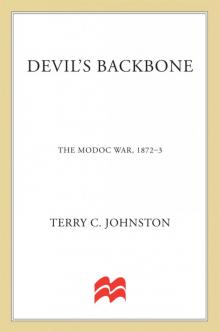 Devil's Backbone: The Modoc War, 1872-3
Devil's Backbone: The Modoc War, 1872-3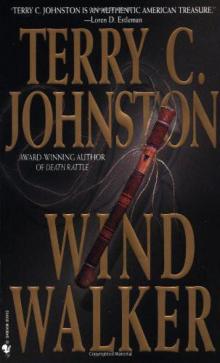 Wind Walker tb-9
Wind Walker tb-9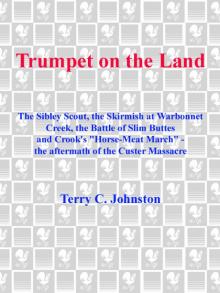 Trumpet on the Land
Trumpet on the Land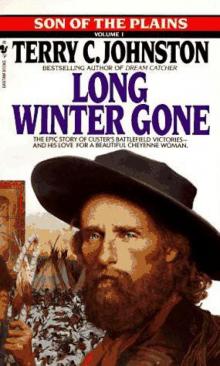 Long Winter Gone sotp-1
Long Winter Gone sotp-1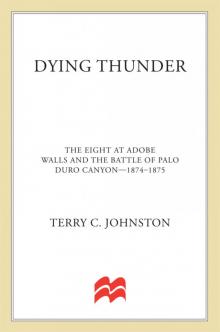 Dying Thunder
Dying Thunder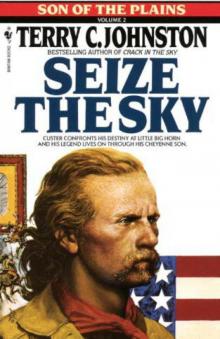 Seize the Sky sotp-2
Seize the Sky sotp-2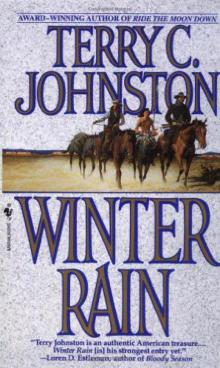 Winter Rain jh-2
Winter Rain jh-2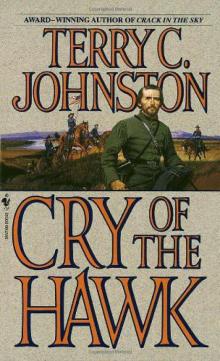 Cry of the Hawk jh-1
Cry of the Hawk jh-1 Sioux Dawn, The Fetterman Massacre, 1866
Sioux Dawn, The Fetterman Massacre, 1866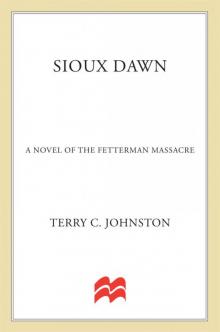 Sioux Dawn: The Fetterman Massacre, 1866 (The Plainsmen Series)
Sioux Dawn: The Fetterman Massacre, 1866 (The Plainsmen Series)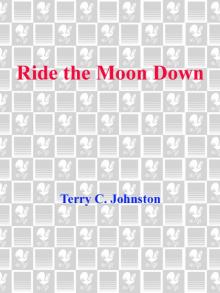 Ride the Moon Down
Ride the Moon Down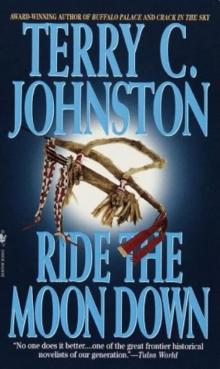 Ride the Moon Down tb-7
Ride the Moon Down tb-7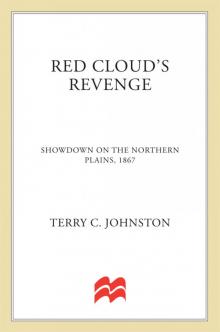 Red Cloud's Revenge
Red Cloud's Revenge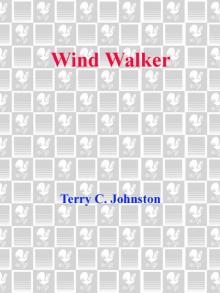 Wind Walker
Wind Walker